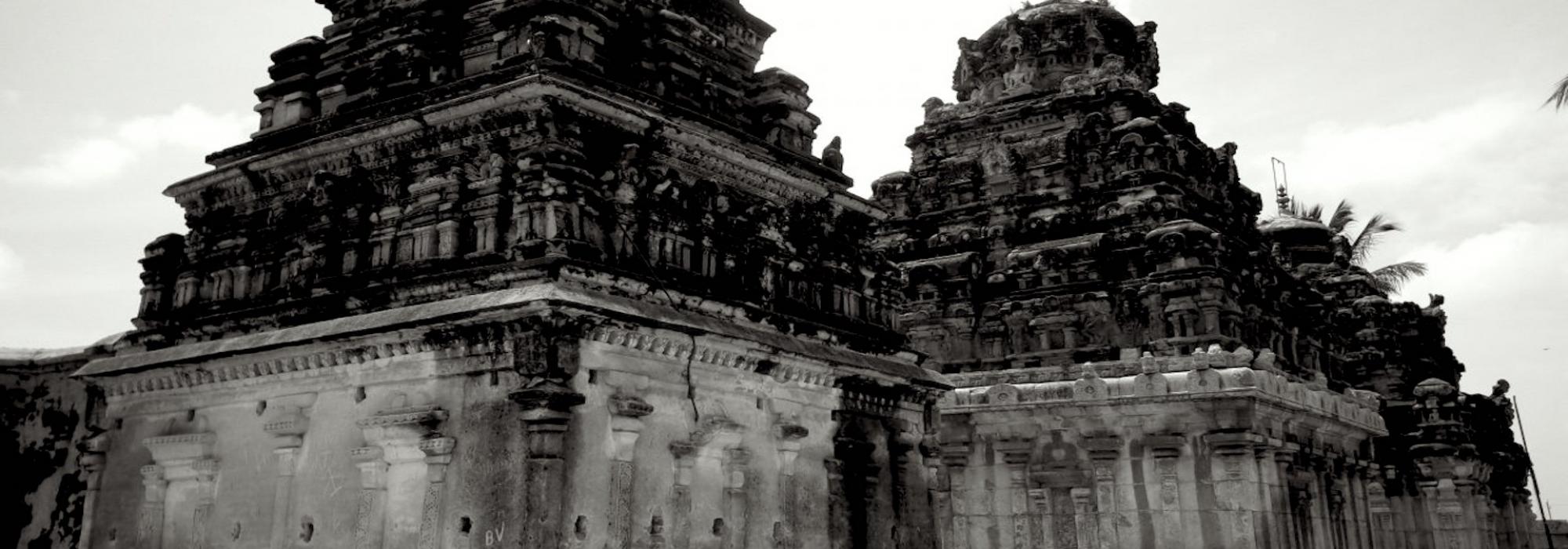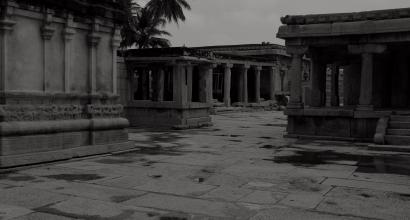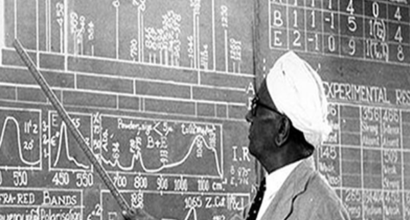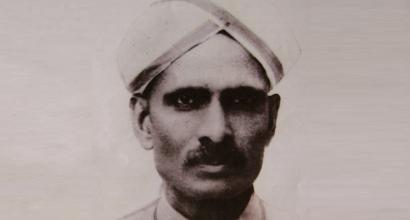Now, a tragic episode. Sri Venkatanarana Bhatta’s wife (I think her name is Smt Venkamma. I can’t clearly recollect it now) hit upon a plan that seems bizarre. There’s a road that passes to the southern side of my house. Next to it is the Kopparam Vaishya function hall, a massive stone building. She encamped in one of the rooms there. With a large metal pot in her hand, she began going to a few houses, begging for food. The inmates of the houses would ask:
“What’s wrong with you? Why have you taken to begging? Your husband is a truly noble man. When has he not provided for you?”
She would answer:
“Why don’t you speak to my husband then?”
This led to separation.
Sri Venkatanarana Bhatta’s friends made numerous attempt to speak a few words of consolation in a bid to reunite the couple. Their efforts didn’t bear fruit. In the end, one morning, we heard the news that she was dead. Apparently, she had been suffering from some illness over the past eight or ten days. After life had gone out of her, Sri Venkatanarana Bhatta, his friends and well-wishers assembled at that building. Sitting in a corner, Sri Venkatanarana Bhatta was singing this to himself in a low tone: “this day is indeed the good day.” The goldsmith Muniswami Achar went near him and said in Telugu:
“My good man, this song on such an occasion?”
Sri Venkatanarana Bhatta said: “What else can I do? Since the day we got married up to this day, she hasn’t experienced happiness from me, I haven’t experienced happiness from her. Fights and chaos every single day: that’s how she turned fifty and I turned fifty-six. What other happiness will she or I get by continuing to live? Death freed her from her misery.”
When they heard this, my father and his friend, “Kandachara” Srinivasaraya wept. Sri Venkatanarana Bhatta’s Guru, Sri Venkatarama Bhatta came closer.
“What’s the point in feeling sad now? Neither of them listened to sage counsel. If this is God’s plan, what can they both do? ‘VidhirahO balavAniti me matiH.’”
He said this and left to take care of the work at hand.
The Political Thought of Sri Venkatanarana Bhatta
As a routine, Sri Venkatanarana Bhatta, Sri Subba Bhatta, and I would walk together to the Someshwara Temple every evening. Vidwans like Kaluru Narasimhacharya would also be present in the temple. After finishing the Darshana of the Deity, we would sit in the expansive Mukha Mantapa (the main hall) and indulge in general chitchat.
After spending some years in Bangalore, I visited my hometown and together with Sri Venkatanarana Bhatta, visited the temple. On that occasion, I got the opportunity to exhibit my newly-acquired scholarship. I explained the nouveau concepts of democracy and socialism to the best of my knowledge. Without interrupting me even once, Sri Venkatanarana Bhatta walked along the way, listening intently. After reaching the temple, we climbed down the steps of the water tank there. He washed his feet and before sitting down to the evening Sandhyavandanam, he said in Telugu:
“What you mean to say is, it’s the regime of the Shudras from now on.”
I was surprised. I thought, “what’s this? He has deduced only this much from all the lofty and grand theories and tenets.” Those words were uttered sixty or sixty-five years ago. We don’t need to probe too deep into it. Only the summary of my dialogue with Sri Venkatanarana Bhatta maybe stated here.
“The word ‘Shudra’ means a person who is endowed with a narrow or petty mind. It is not used in the sense of being one Varna among the four Varnas. It doesn’t matter which Varna a person belongs to, it is important that character and conduct be lofty; it is important that one is broadminded and magnanimous. Look at our own town. Muniyappa from Totada Palya, Muniyappa from Someshwara Palya, Marashetty, Sonne Gowda from Sonnavaadi—will anybody disregard their advice? Most certainly, everybody respects them. Don’t we respect Kashti Haidar Saheb, Haji Madar Saheb, Syed Pachami? Who will object to a country which is ruled by intelligent and respectable people?
But what you’re saying does not lead to that path. You talk about majorities. You talk about the masses. In any country, is it possible that the majority of the people, the masses are all intelligent and uniformly endowed with a sense of justice and ethics? If that is the case, then we don’t need a Government at all. Apparently, such conditions existed in the Krita[i] Yuga:
Naiva daMDO na dAMDikah ||
There is neither punishment nor one who enforces punishment.
“According to your argument, do you mean to say that such a [democratic] Government will usher in conditions akin to the Krita Yuga? When you say “Shudra,” it means a person who is constantly unhappy, and his mind is always stricken with grief. ‘I don’t have this, I don’t have that. Some other person obtained something but I didn’t obtain it.’ In this manner, a person who escalates feelings of jealousy and desires within himself is called a Shudra. He is a niggard.
“If such people obtain the authority to rule the country, they will only look after their personal interests; will they take care of the country? It might become the commotion of the rabble; will it become an administration that is imbued with justice and wisdom? What we need is justice. That’s it, right?”
I didn’t continue the debate. One of the reasons for this was that I didn’t want to delay the time for Sandhyavandanam. But a more important reason flashed to my mind. The concern that Sri Venkatanarana Bhatta raised wasn’t one that could be decided quickly. Neither was it something that could be resolved by argument and counter-argument. People need to learn what is suitable for them only through experience. Even in 1969, democracy has still remained in the stage of experimentation and examination. In various countries across the world, democracy has lost its strength and prestige.
The answer to Sri Venkatanarana Bhatta lies in the womb of the future.
Concluded
This is the second part of an English translation of the third chapter of D V Gundappa’s Jnapakachitrashaale: Vol. 5 – Vaidikadharma Sampradayastharu.
Notes
[i] Krita Yuga or Satya Yuga is the first and the most perfect Yuga among the four Yugas. The other three being, Treta Yuga, Dwapara Yuga, and Kali Yuga. We are currently living in the Kali Yuga. According to this conception, in the Krita Yuga, Dharma, Satya, and all other virtues are intact. People are virtuous and noble on their own without any external imposition. Therefore, the necessity for a King or ruler does not arise. Because people are naturally virtuous, the question of punishment does not arise.




































